Warships. Cruisers. The sea god really loves the trinity!
We continue the topic that began two articles earlier. That is, on the agenda we are going through the agony of Italian shipbuilders in an attempt to create a normal light cruiser. Some researchers generally consider Kondotieri of the first two episodes to be almost overgrown leaders, but here I do not agree with them.
Still, the Kondotieri of series A and B were cruisers. Very light, very flawed, but cruisers. Fast (doubtfully few) and very fragile. However, the armament was the most cruising, although there were enough claims to air defense.
However, when compared with anti-aircraft weapons, for example, the Soviet cruiser Chervona Ukraine or Kirov, it becomes clear that it could have been worse.
Although you can get to the bottom of speed too. Yes, measurements were made in greenhouse conditions and having removed everything that is possible. Real combat speed, as I said, was significantly lower than that shown in the tests.
Armor and survivability - yes, these were cruisers' weaknesses, and Italian about it navy the command knew perfectly well. That is why they did not stamp Type A, but tried to fix it by developing Type B. It did not help, as it became clear.
The road, as they say, is overpowered by the walker. Therefore, the following type of Kondotieri cruiser appeared, type C.
The War Department demanded dramatic changes regarding protection. The construction was hanged at the Ansaldo company, which, I believe, coped with the task with honor, because real light cruisers, not inferior to world analogues, were born.
By the way, it was the Kondotieri type C that became the prototypes of our cruisers type 26 Kirov. But this is completely different story.
So, the engineers from Ansaldo (a superfirm, since you can make candy like A and B ...) built two cruisers. Raimondo Montecuccoli and Muzio Attendolo. And these were already ships that can be called real light cruisers. Without any comparisons with scouts and destroyer leaders.
The essence of the project is simple, as I do not know what. Extend the ship by 10 meters, make it wider by 1 meter. The displacement will increase, according to calculations, to 6150 tons (Da Barbiano had 5300 tons), and the entire increase in displacement should be spent on booking a ship.
A very reasonable move.
Next, it was necessary to increase the power of the power plant. Up to about 100-110 thousand hp The ship with the new reservation still had to issue 36-37 knots according to plan.
Reservation It was a song, such a hot Italian serenade about how a swan was made from an ugly duckling. Or a goose.
No joke, the total weight of the armor was increased from 578 to 1376 tons compared with the same "Da Barbiano". Plus, on type C, the idea was realized to combine all the fighting posts and place them all in an armored superstructure having a cylindrical shape.
The vertical hull reservation was to have a thickness of 60 mm, vertical bulkheads of 25 mm, and a deck of 30 mm. Traverses and tower defense were also to be strengthened.
The head cruiser of the series, Raimondo Montecuccoli, was laid down on October 1, 1931. The second ship, "Muzio Attendolo", in connection with the introduction of some changes to the project and financial difficulties, was laid down only in April 1933.
Names, of course, were given in honor of the historical figures of Italy.
Raimondo, Count of Montecuccoli, Duke of Melfi (1609-1680). He rose to the generalissimo of the Holy Roman Empire, for which, on the whole, he fought his whole life. With the Poles against the Swedes, with the Austrians against the Turks, with the Danes against the Swedes again, with the Dutch against the French. I won. He wrote many works on tactics and strategy. He died of old age with his death, which is generally worthy.
Muzio Attendolo “Sforza” (1369-1424) is an Italian condottiere who served with Da Barbiano for a long time. The founder of the Sforza dynasty, which ruled Milan, also fought all his life and ended it, drowning while crossing the Pescara River.
Naturally, according to Italian tradition, cruisers got their personal mottos:
- “Raimondo Montecuccoli”: “Con rizolutezza con rapidita” (“With determination and speed”);
- “Muzio Attendolo”: “Constans et indomitus” (“Firm and invincible”).
In some sources, the Duca di Aosta and the Eugenio di Savoia, built a little later, are added to the two cruisers in the company. But we will consider them separately, since they were similar in appearance, but pretty different inwardly ships. Type D "Condottieri" differed from type C by a good thousand tons of displacement, which entailed quite decent changes in design.
There is a difference even externally.
What did the Italians do on the third attempt?
Standard displacement of 7 tons, a total of 524 tons.
Length 182 m, width 16,5 m, draft with a full w / and 6 m.
The power plants consisted of 6 Yarrow oil boilers and two turbines. Turbines of the Belluzzo system stood at Montecuccoli, and from Parsons at Attendolo.
The power of the power plants reached 106 hp, which ensured a full speed of 000 knots. At sea trials conducted in 37, Montecuccoli, with a displacement of 1935 tons, developed a machine capacity of 7020 hp. and reached a speed of 126 knots. “Attendolo” with a displacement of 099 tons showed 38,72 7082 hp and 123 nodes, respectively.
The cruising range was estimated at 1100 miles at a speed of 35 knots, at a cruising speed of 18 knots for the Montecuccoli, 4 miles, for the Attendolo, 122 miles.
Reservation That for which everything was started.
The basis of the armor protection was armored belt 60 mm thick from tower No. 1 to tower No. 4. The belt was closed with 25 mm traverses. Behind the belt was a 20 mm shatterproof bulkhead.
The deck was armored with 30 mm thick sheets, sections adjacent to the armored belt were armored with 20 mm sheets.
The conning tower had 100 mm armor, the command and rangefinder post had round armor 25 mm, roofs 30 mm.
The towers themselves had frontal armor 70 mm, 30-mm roof and 45-mm side walls.
The thickness of the armor of the barbets of the towers was different. The barbets of the elevated towers No. 2 and No. 3 above the upper deck were covered with 50 mm armor, the barbets of the bow towers (No. 1 and No. 2) below the level of the upper deck were covered with 45 mm armor, in the cellar area the armor thickness was 30 mm.
The feed tower turrets had a thickness of 30 mm over the entire height. Shields of universal 100-mm guns had a thickness of 8 mm.
When designing armor, calculations were made that gave the following picture. At a distance of 20 m, a 000-mm shell pierced the armored belt and the bulkhead behind the belt at cruisers with a meeting angle of not more than 203 °, and at a distance of 26 m - no more than 17 °. This inspired some confidence, but the calculations - this is the case ...
The 152-mm shell began to confidently pierce the belt and the bulkhead at zero angle at a distance of 13 m.
In general, meeting with heavy cruisers for the Kondotieri was obviously fatal. But it’s already not bad that, in comparison with their predecessors, these cruisers were not afraid of the shells of guns of destroyers. Already not bad, as they say.
The combination of the belt and the bulkhead moved away from it provided relative protection against shells with a small slowdown or an instant fuse, which would break in the space between the belt and the bulkhead. That is, from acronym damage by fragments.
The only thing left unprotected is the steering cars. Doubtful such savings, but such a decision was made by the designers.
weaponry
The armament remained exactly the same as on the Type C. Eight guns of the OTO firm with a caliber of 152 mm of the 1929 model.
Fire control of the main caliber was supplemented by the installation of RM 2 fire control devices. With the help of these devices installed in towers No. 2 and No. 3, it was possible, if necessary, to control the fire of the entire GK or groups of towers - bow and stern. Well, of course, each of the four towers had the opportunity to fire based on the data of their rangefinders.
Universal artillery consisted of all the same 100-mm guns in Minisini mounts of the 1928 model. The stern location is identical to the previous ship series.
But the small-caliber anti-aircraft artillery finally received the unfortunate 37-mm anti-aircraft guns of the 1932 model of Breda already mentioned in previous articles. Each cruiser received as many as eight such machines in four twin units.
The effective firing range was 4000 m, the maximum elevation angle reached 80 °, the maximum angle of descent 10 °. Ammunition consisted of 4000 shells.
The anti-aircraft guns were supplemented with the same eight 13,2 mm machine guns of the same Breda firm of the 1931 model in four twin units.
The torpedo armament of the cruisers also remained unchanged, 4 533-mm units, two twin-tube installations of the SI 1928 R / 2 type on each side.
The ammunition stock consisted of 8 torpedoes: 4 in the vehicles, 4 spare, which were stored near the vehicles in special hangars. On type D cruisers, the storage layout has been slightly modified. The bodies of the torpedoes were all stored in the same place, but for warheads they made special cellars under the deck on each side.
A very interesting solution for the sake of security. But during the war, hangars for spare torpedoes were generally dismantled from cruisers, since the torpedoes in them still remained a source of increased danger, and in the cellars for warheads they began to store additional ammunition for anti-aircraft guns.
Cruisers could still be used as minefields.
There were two download options, maximum and standard. Maximum - 96 min type "Elia" or 112 min type "Bollo", or 96 min type "P.200". But in this case, tower number 4 could not fire. The standard load, when the tower No. 4 did not interfere, consisted of 48 min “Elia”, or 56 “Bollo”, or 28 “P.200”.
During the war, German mines entered the arsenal of the Italian fleet. So the cruisers could take on board 146 min type EMC or 186 anti-submarine mines UMB. Or you could take on board from 280 to 380 (depending on the model) mine defenders of German production.
The anti-submarine weapons consisted of a passive sonar station and two 50/1936 ALB type air-bombers.
Aviation weapons were identical to types A and B, that is, a catapult and two seaplanes IMAM RO.43.
All cruisers had two sets of equipment for setting smoke screens: steam-oil and chemical. At the base of the chimneys there were devices (6 or 8 depending on the ship) for setting smoke screens by mixing smoke from boilers with steam and oil. They provided the production of black "oil", white "steam" or colored smoke curtains. In the stern along the sides were attached two chemical smoke generators. When they were turned on, a thick white cloud enveloped the ship for a short time.
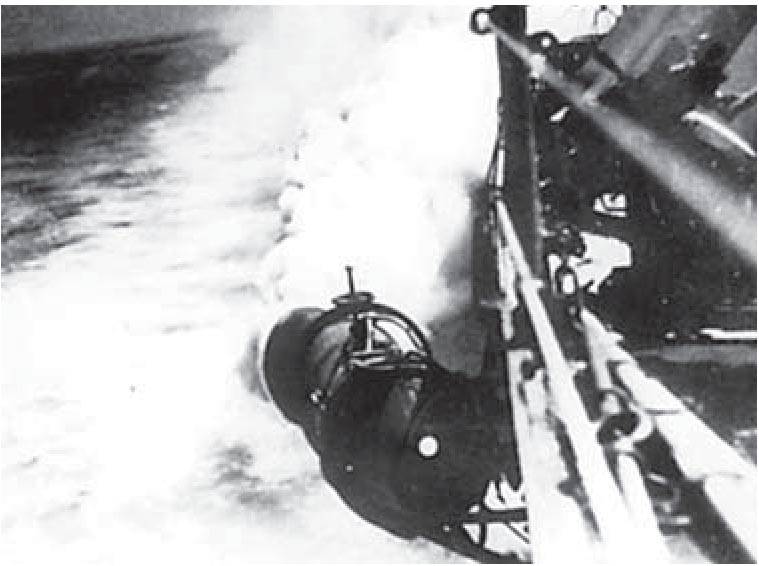
The crew of the ships consisted of 27 officers and 551 foremen and sailors.
Ship modernization was, but carried out at a fairly calm pace.
In 1940, the fire control system (KDP and guns) was supplemented with gyro-stabilization equipment. This allowed in a battle with excitement to fire the main caliber at any time, without waiting for the ship's hull to return to an even keel.
In 1942, the 37 mm machine guns of the M1932 model were replaced by machine guns of the M1938 model with air cooling, more convenient and easier to aim and maintain. Installations from the bridge were transferred to the place of dismantled guidance posts of torpedo tubes.
13,2 mm machine guns were shot at Raimondo Montecuccoli (finally!) And 10 single-barrel 20 mm Oerlikon assault rifles were installed instead.
In 1943, the EU 3 Gufo radar station and the German Metox radio intelligence station FuMB.1 were installed on the cruiser.
In 1944, mine rails, a catapult, and torpedo tubes were removed from Montecuccoli.
Combat service
"Muzio Attendolo." Let's start with it, because it's simpler and shorter.
The battle began with the cruiser in June 1936, when the Spanish Civil War broke out. The ship made a trip to Barcelona and Malaga, taking out the citizens of Italy from there.
On November 28, 1936, the Italian government signed a secret mutual assistance agreement with Franco, so the Italian fleet had to take on patrol of the western part of the Mediterranean Sea and escort the transports on which the personnel and military equipment of the Italian expeditionary corps were delivered to Spain.
The Muzio Attendolo delivered two torpedo boats MAS-435 and MAS-436 to the fleet of nationalists at the disposal of General Franco on deck. The boats were named “Candido Perez” and “Javier Quiroga”.
Entering World War II with the declaration of war between France and Britain, the cruiser was engaged in the cover of mine productions.
Then there were access to the sea to cover the convoys to North Africa.
"Muzio Attendolo" took part in the battle of Punta Stilo in July 1940. Nominal participation in inglorious battle.
In October-November, the cruiser took part in operations to occupy Albania and against the Greek island of Corfu. Until the beginning of 1941, the cruiser regularly fired on positions of the Greek troops.
From February to May 1941, along with the cruisers of the 7th division, “Muzio Attendolo” was engaged in mine operations north of Tripoli. A total of 1 mines and 125 mines were defended. The task was considered completed.
The second half of 1941 was marked by convoy operations in North Africa. We put it right - unsuccessful. 92 percent of the fuel sent to North Africa, as well as 12 vessels with a total tonnage of 54960 gross tonnage. It was lost only in November 1941. Plus three sunk destroyers and two damaged cruisers.
The year 1942 brought some lull, because Britain began to have full-fledged problems caused by the entry of Japan into the war.
On August 11, the Italians made another absurdity, canceling the attack on the Pedestal convoy, which was actually doomed, going to Malta and deploying the ships home. A crew of cruisers (Gorizia, Bolzano, Trieste and Muzio Attendolo plus 8 destroyers) fell directly into the arms of British submarines located in the vicinity of the islands of Stromboli and Salina.
The British submarine P42 fired 4 torpedoes. One hit the Bolzano heavy cruiser, and the second hit the Muzio Attendolo.
The torpedo hit the bow, tearing it for 25 meters. None of the crew were injured, but the cruiser was thoroughly mutilated. But he stayed afloat, the team was even able to give a move. The cruiser was dragged to Messina for repair, and then transferred to Naples.
December 4, 1942 during the raid of British aviation, the cruiser received several direct hits and sank.
In 1949, the ship was lifted and cut into metal.
Raimondo Montecuccoli
The service of this ship turned out to be longer.
Just like the sistership, Raimondo Montecuccoli began his military service in Spain. Patrol and removal of refugees.
In August 1937, the cruiser was transferred to the Far East, to protect Italian interests in the outbreak of the Sino-Japanese war. It is difficult to say what interests Italy had in Shanghai, but the ship was there. Until December, Raimondo Montecuccoli guarded Italian ships, diplomatic missions, and consulates.
The beginning of World War II, the cruiser noted active participation in mine productions in the Gulf of Tunisia against the French fleet.
Raimondo Montecuccoli took part in the battle of Punta Stilo, but like all other ships, nothing was noted.
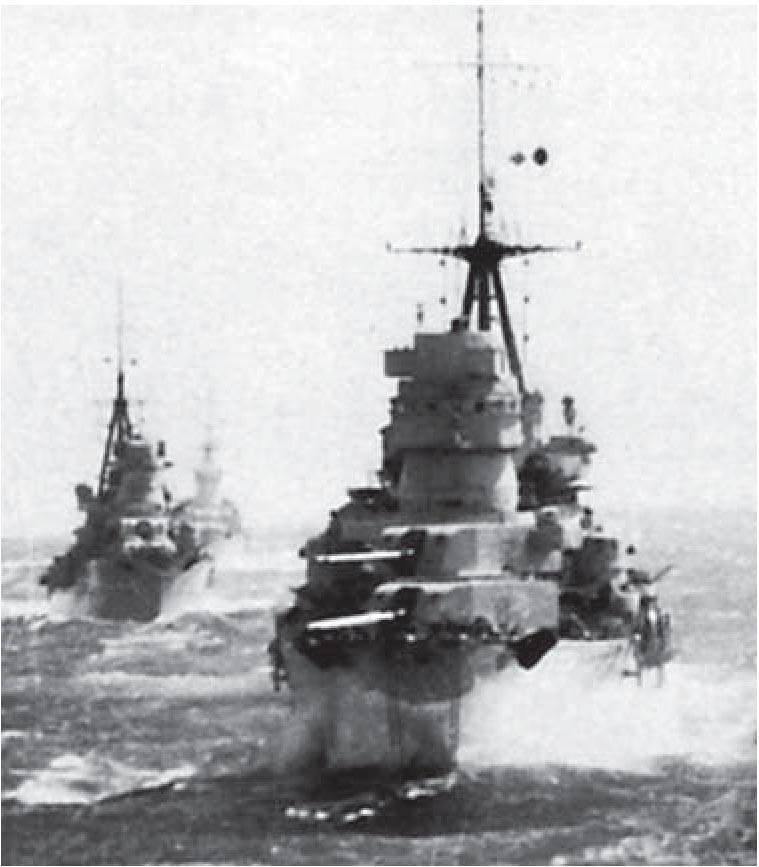
In October-November 1940 he took part in operations against Albania and Greece.
In fact, the whole of 1941 took place in mine installations in the Gulf of Tunisia, on the approaches to Malta and in the Sicilian Gulf.
Raimondo Montecuccoli spent 1942 in an attempt to stop the British from sinking transport ships going to Africa. Honestly, the attempts were unsuccessful at all.
In June 1942, the cruiser took part in the battle off Pantelleria, the only naval battle that can be said to be won by Italians. Although all the ships of the Allies sunk in this battle died either in mines or from the Luftwaffe. But yes, Italian ships have contributed.
When, in December 1942, British aircraft sank the “Muzio Attendolo” in Naples, the Raimondo Montecuccoli, who was also there, also got decently. On the cruiser, a bomb exploded in the auxiliary boilers. The nasal chimney was completely destroyed by the explosion, the right side of the nasal superstructure was seriously damaged. Fragments # 3 and # 4 were disabled by splinters. In addition, other bombs riddled the freeboard and superstructures in the aft section on the starboard side with many fragments, and one of them hit exactly the 100-mm installation.
Until the middle of summer 1943, the Raimondo Montecuccoli was under repair. Here, the cruiser received radar weapons.
Next was the Sicilian campaign, or rather, helpless attempts to organize at least some resistance to the forces of the allies, who began landing troops on the islands. The cruiser made two inconclusive raid operations.
In September 1943, after the armistice, the Raimondo Montecuccoli, as part of the entire Italian fleet, went to Malta to surrender to the British.
The cruiser was lucky, he reached Malta. Unlike the battleship Roma and the two destroyers that the Germans sunk.
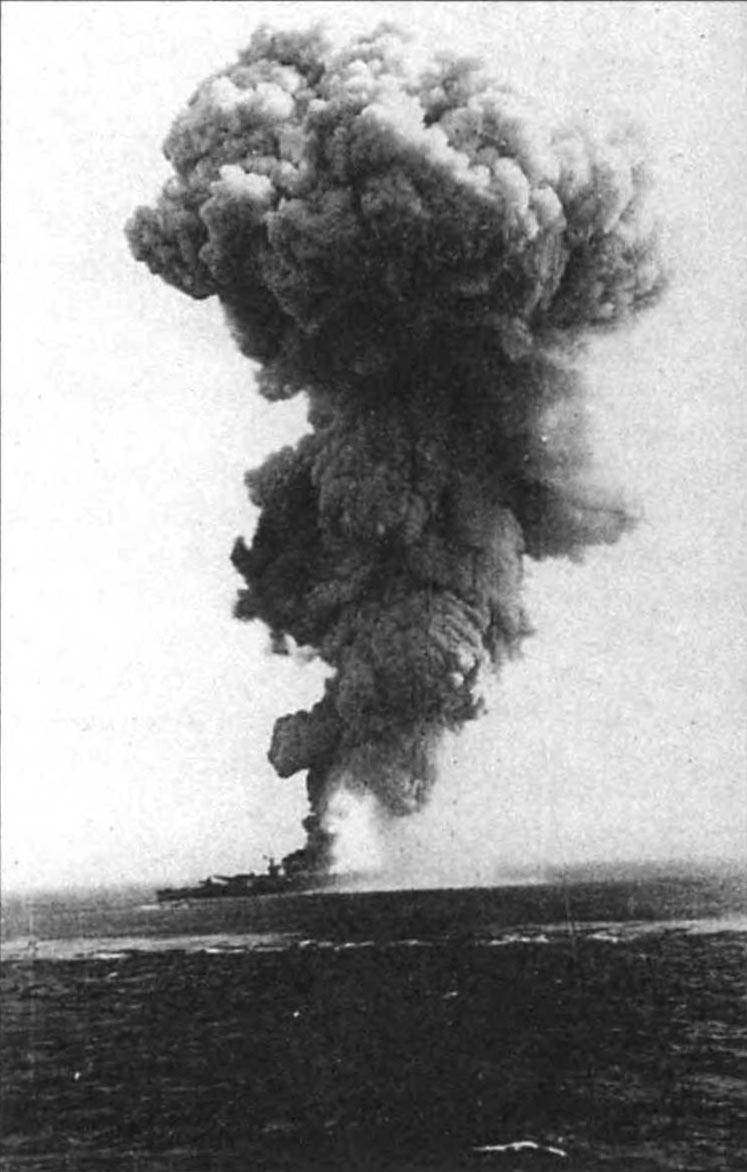
Raimondo Montecuccoli was lucky. He was transferred to transport, and not set to rust on a joke. And the whole of 1944, the cruiser transported British troops. The final report shows the number transported, about 30 thousand people.
After the end of the war, Raimondo Montecuccoli was again lucky. He turned out to be one of the four cruisers that Italy was able to keep. But he was transferred to training ships and remained so until 1964, when the ship was finally disabled and in 1972 dismantled for metal.
What can be said as a result? The third attempt ... And in the end we got quite decent, and, most importantly, strong ships.
In a previous article, I said that the main nightmare of Italian cruisers were not bombs and shells, but torpedoes. The example of Muzio Attendolo is more than indicative, in my opinion. His predecessors survived the torpedo hit failed.
The combat path "Kondotieri" type C best indicates that the ships turned out.
- Roman Skomorokhov
- Warships. Cruisers. They would build a bulk carrier right away...
Warships. Cruisers. Neither steal nor guard
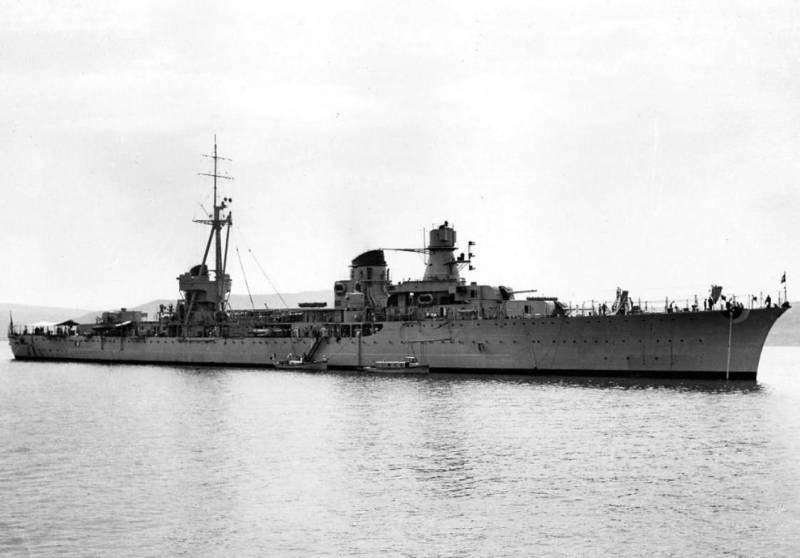
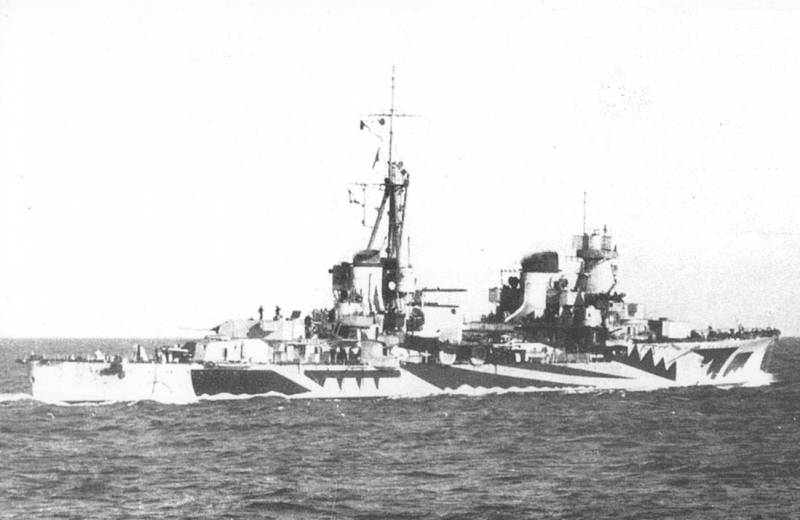
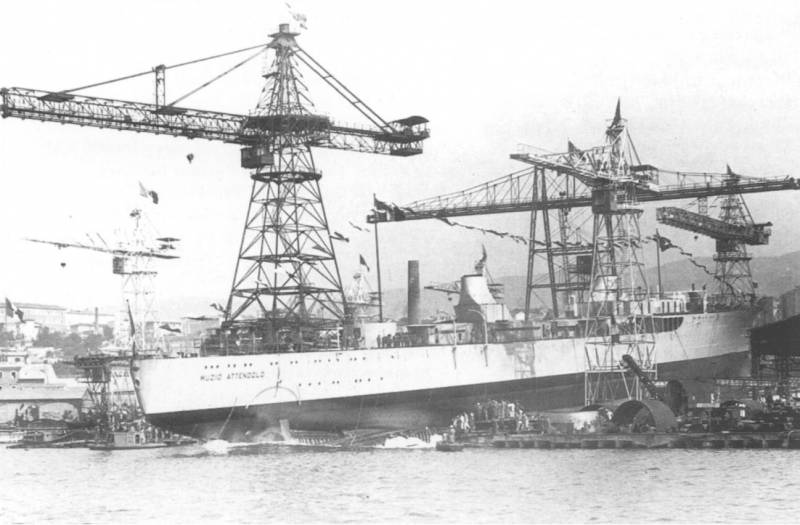
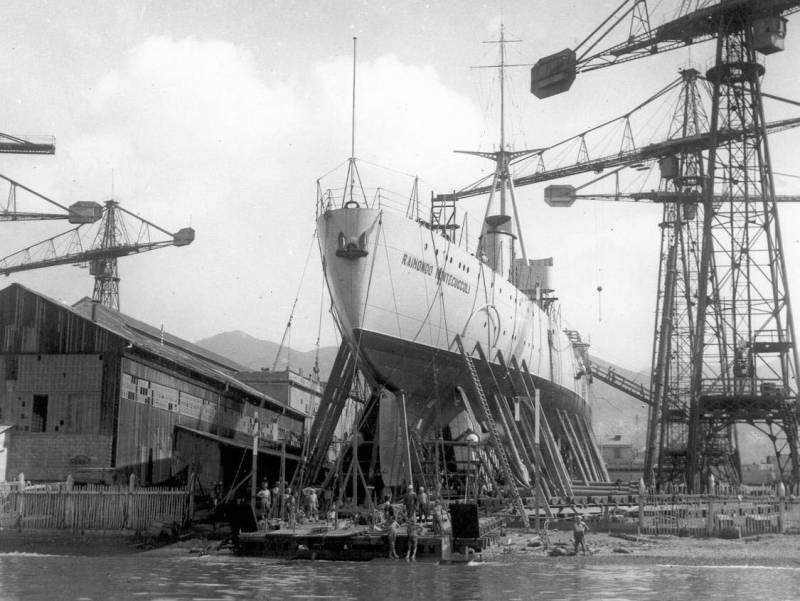
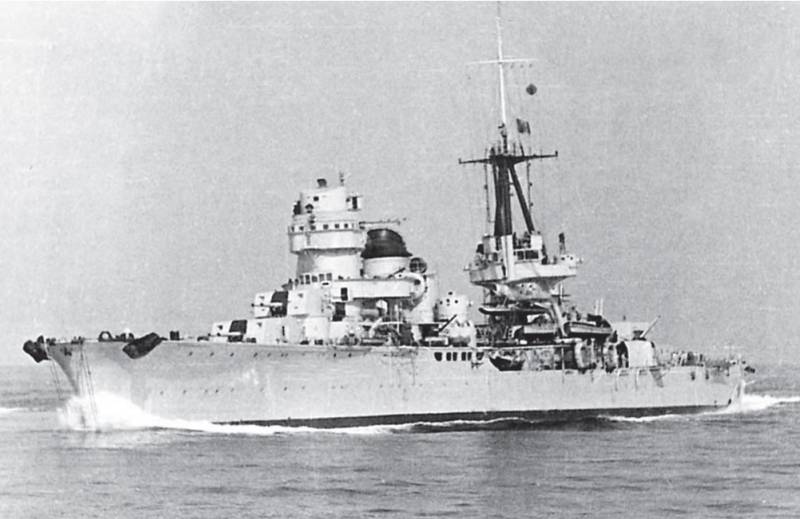
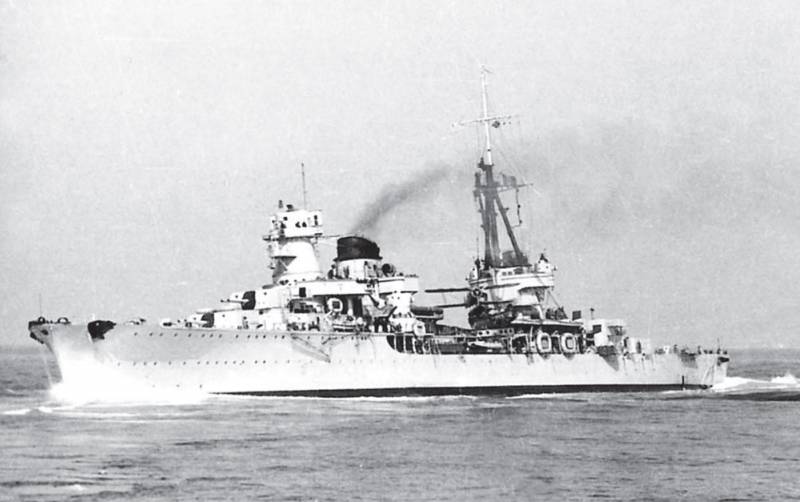
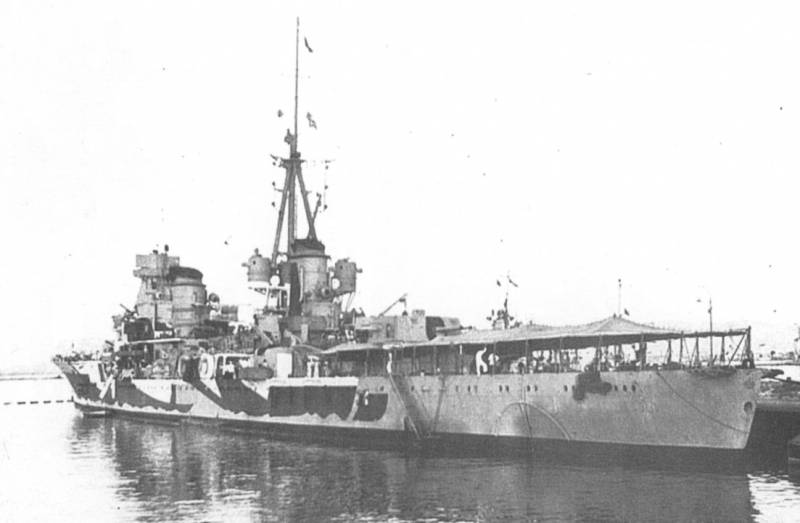
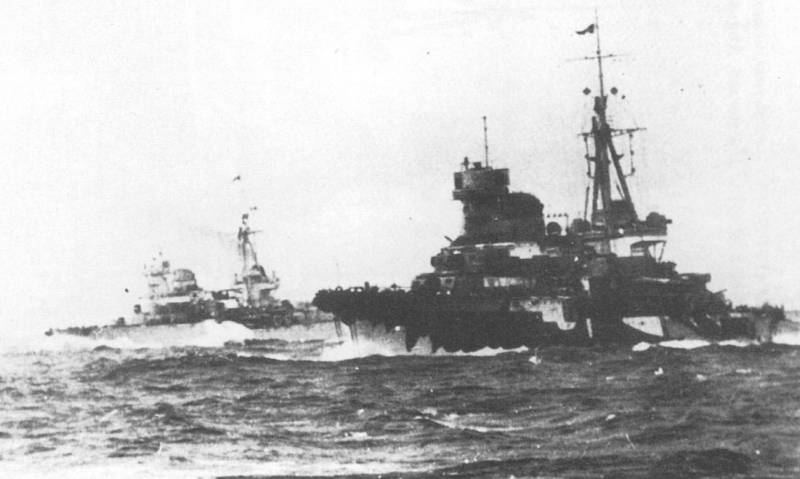
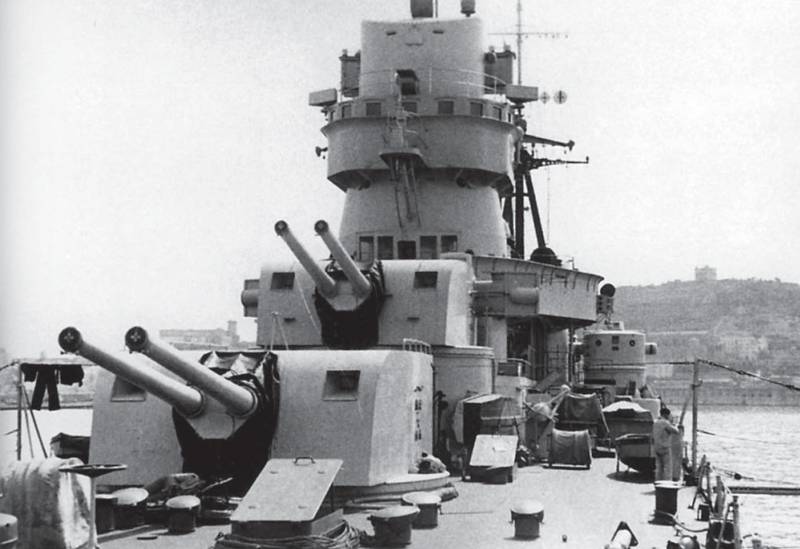
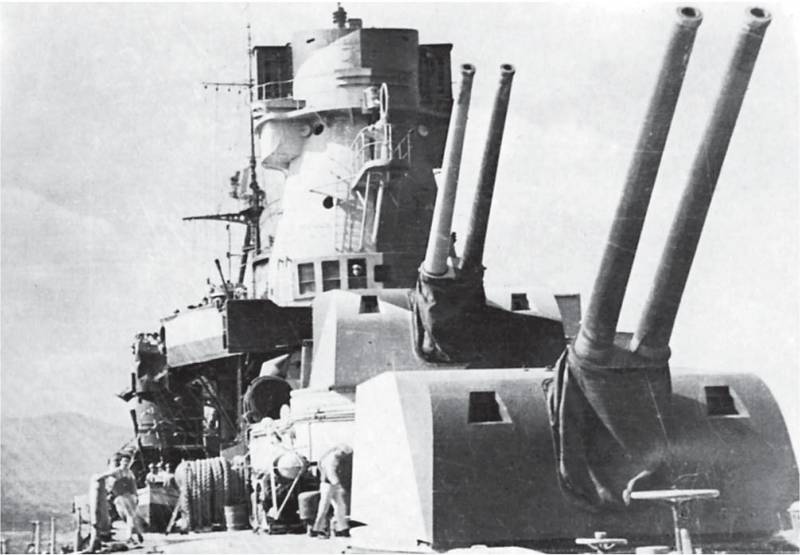
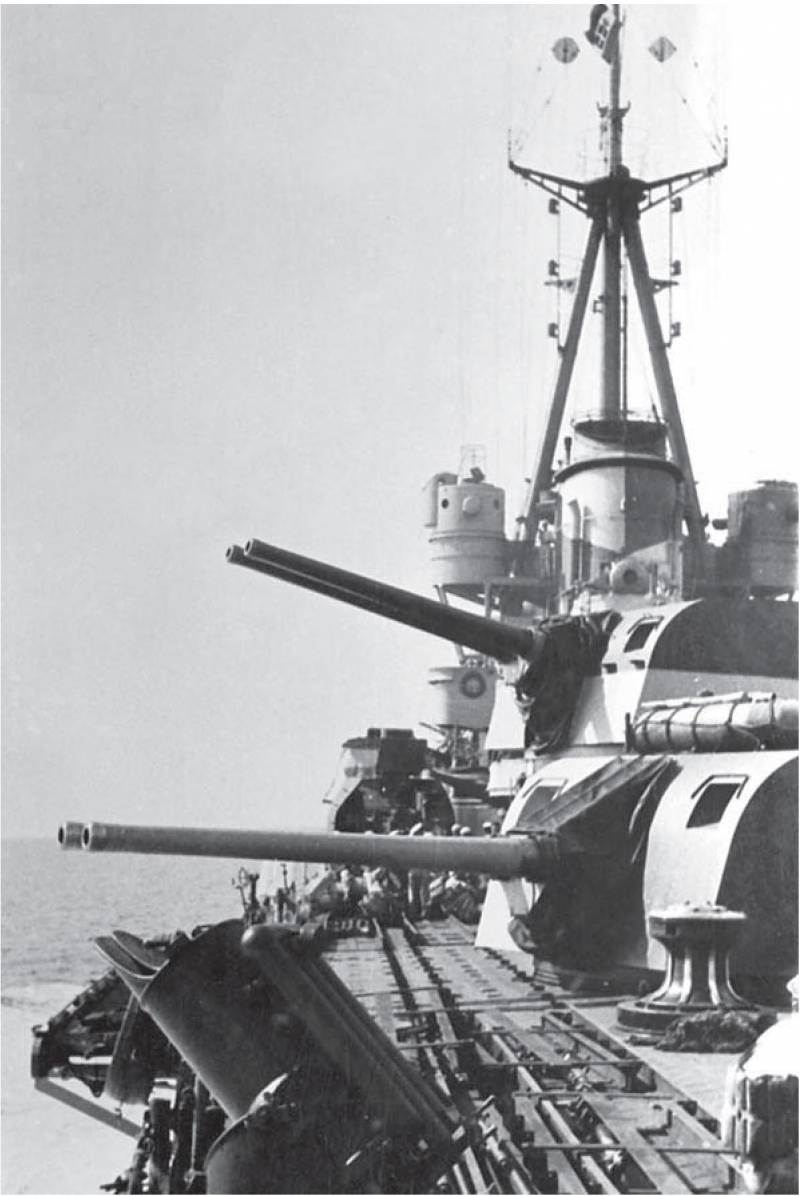
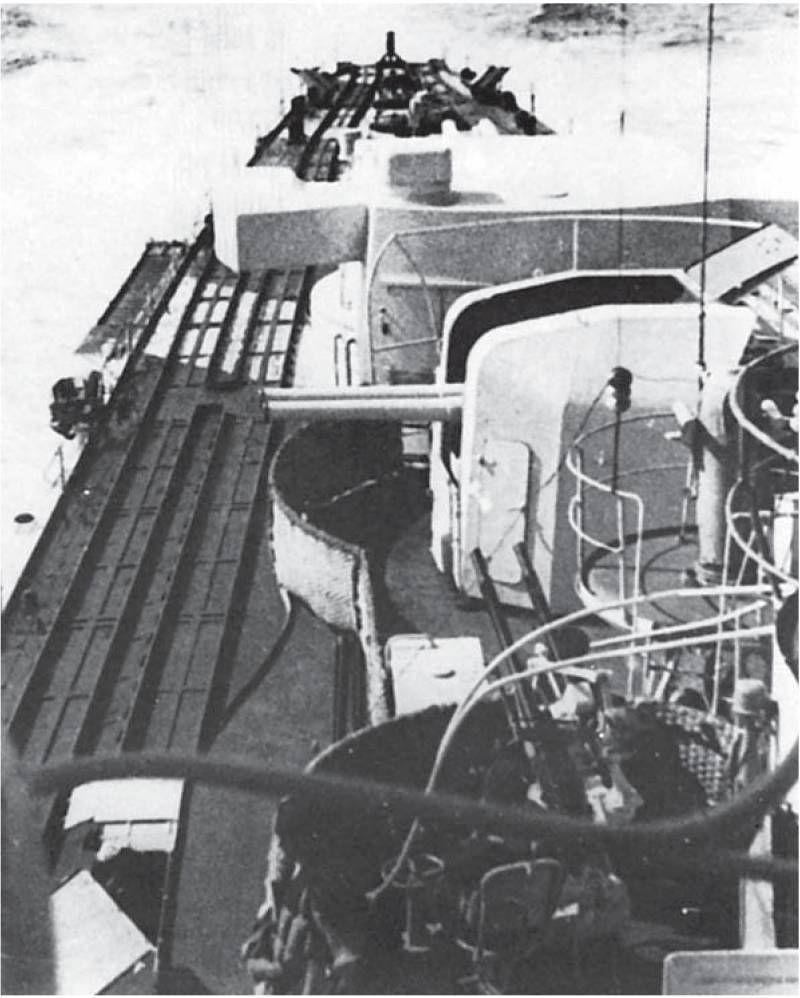
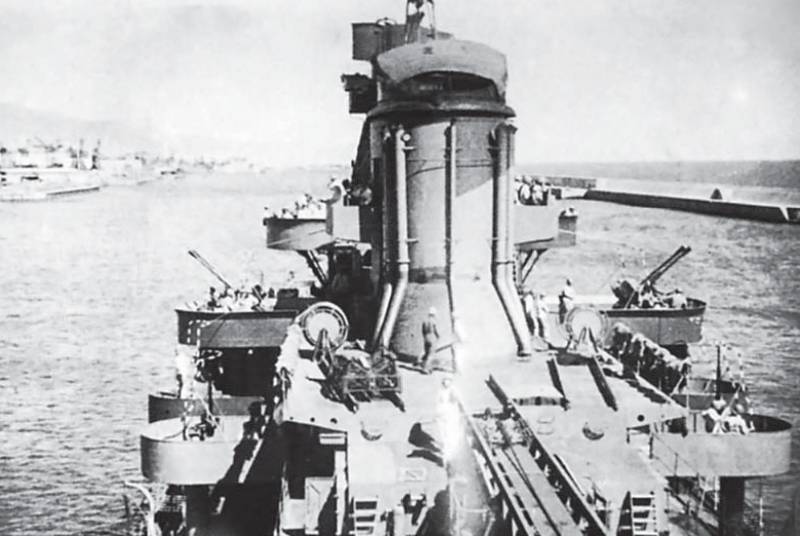
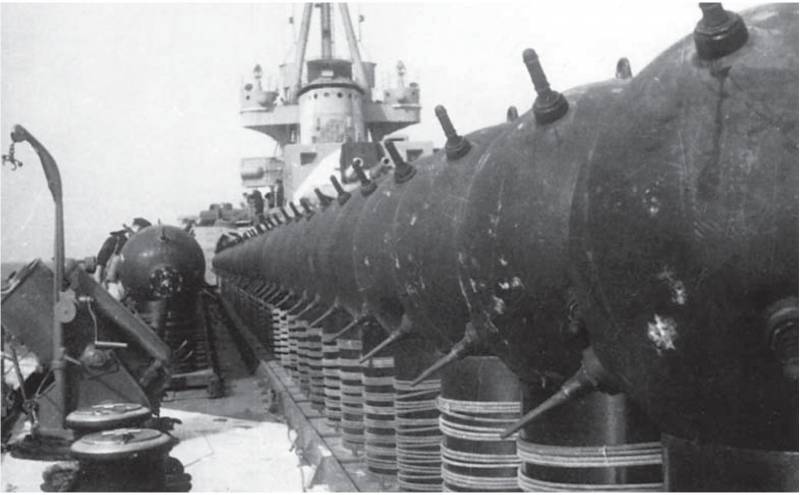
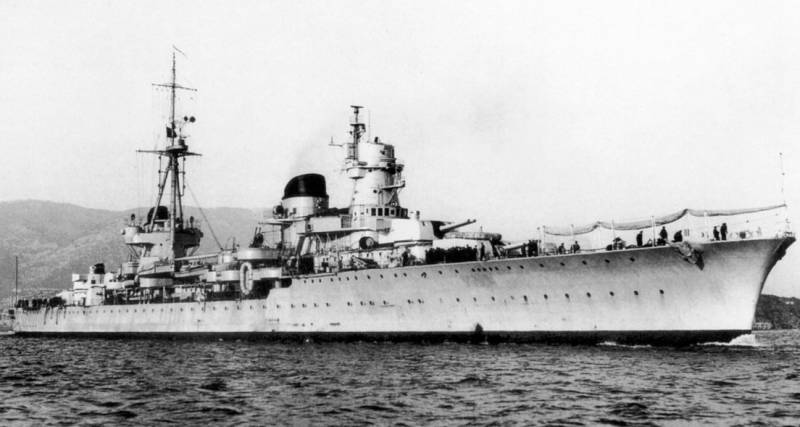
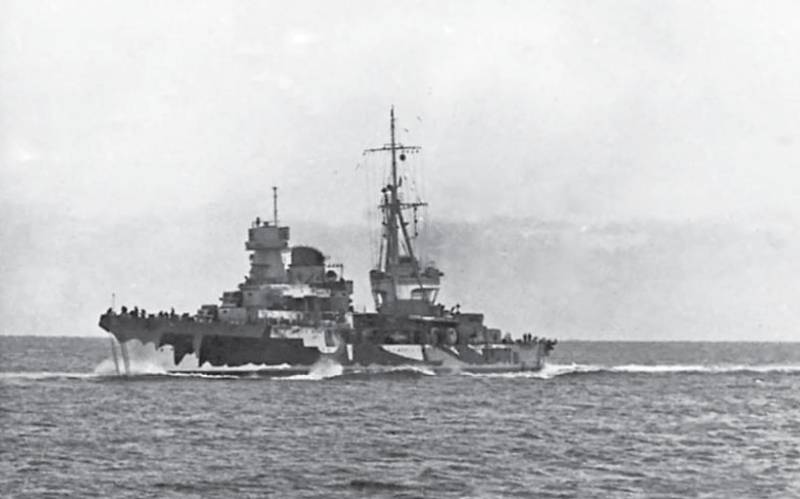
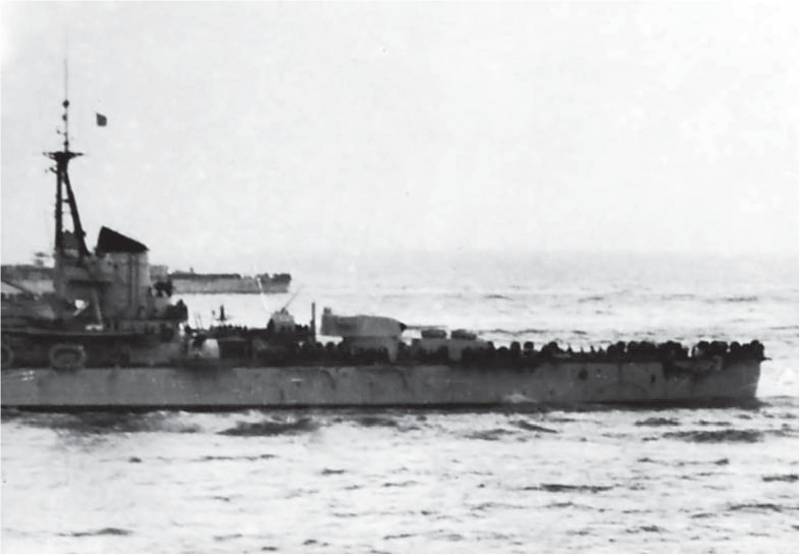
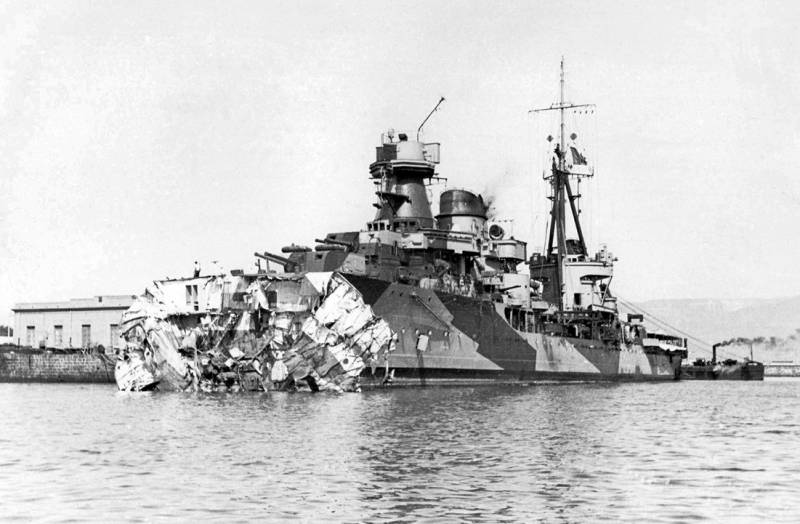
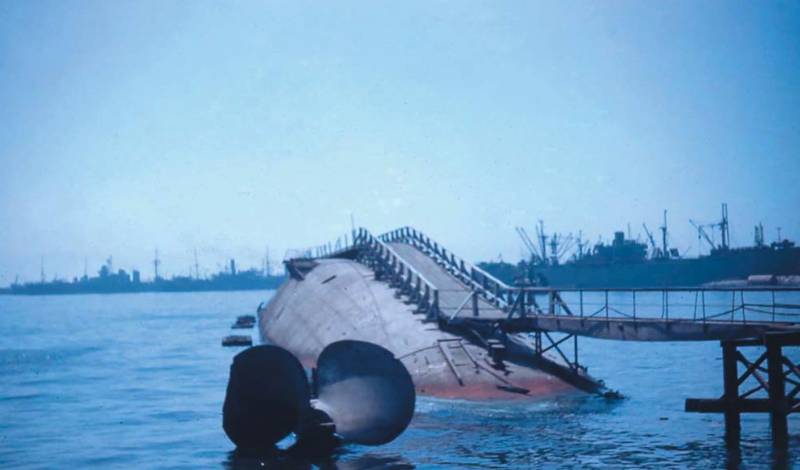
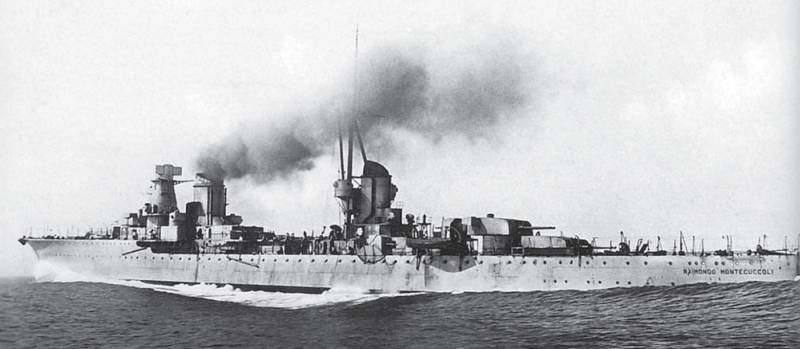
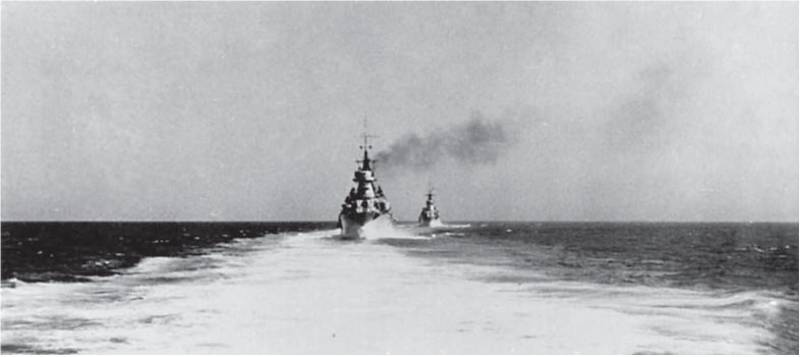
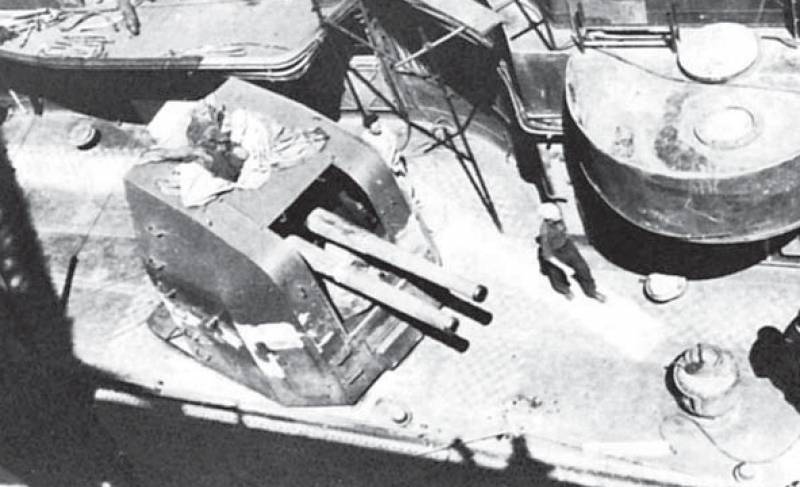
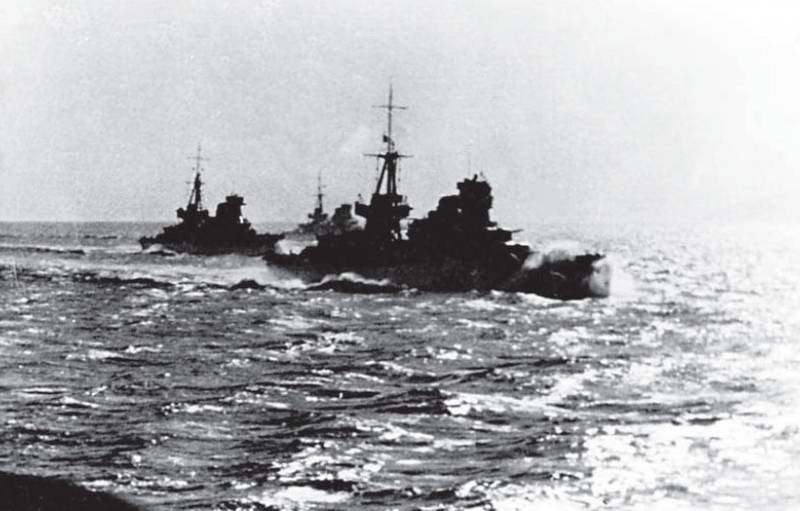
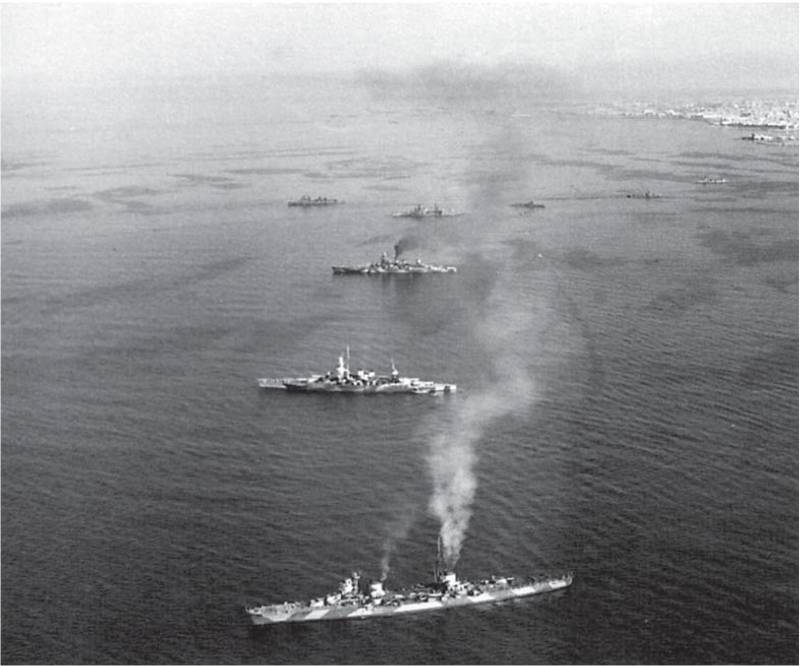
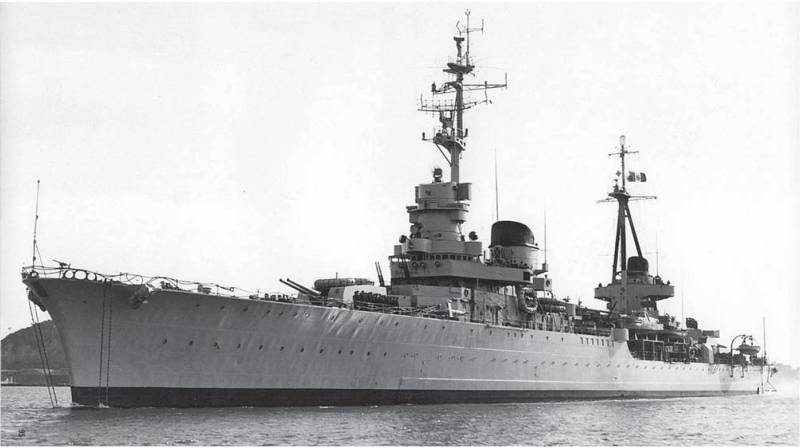
Information